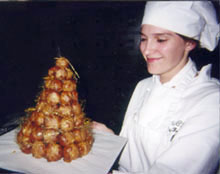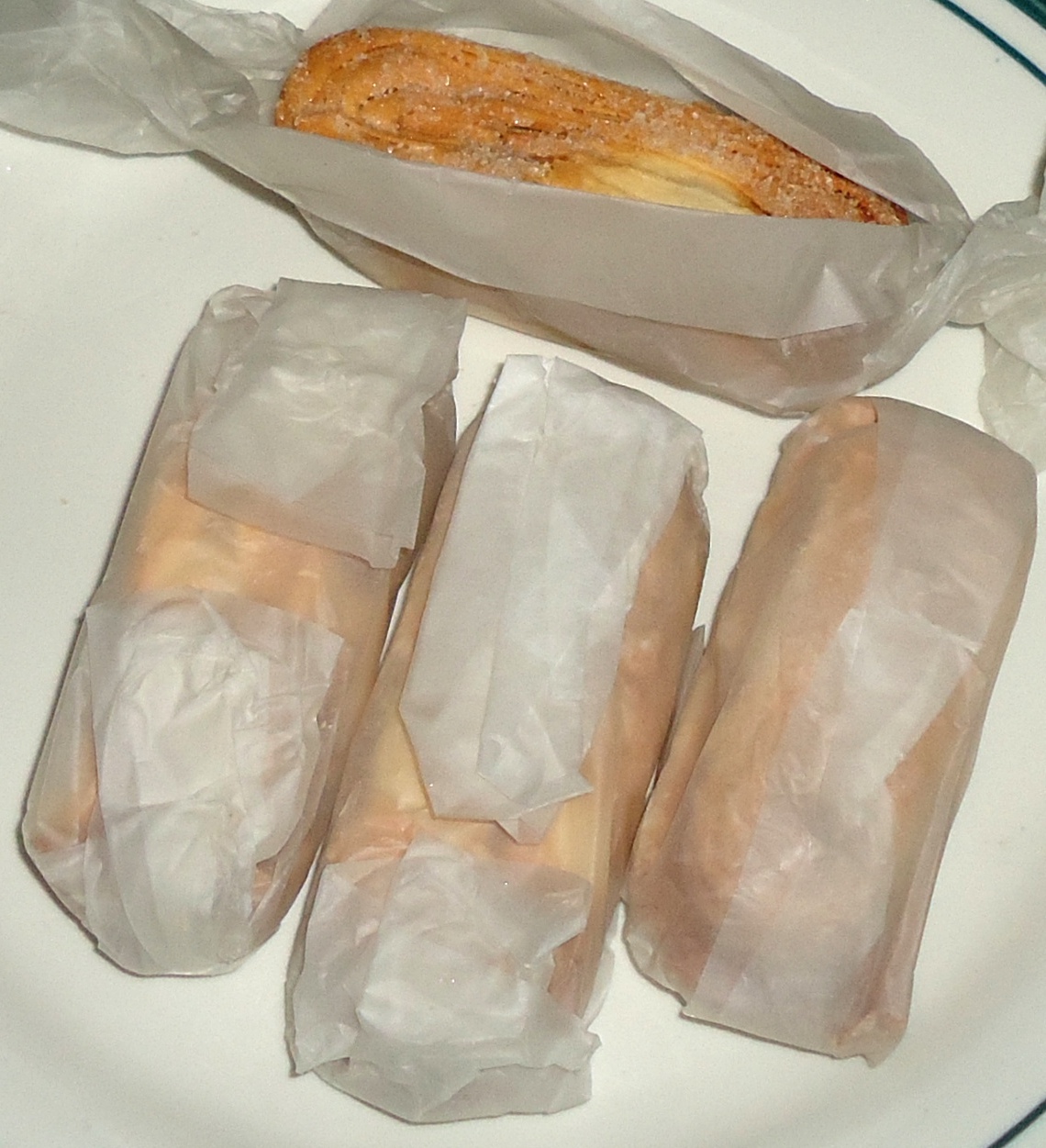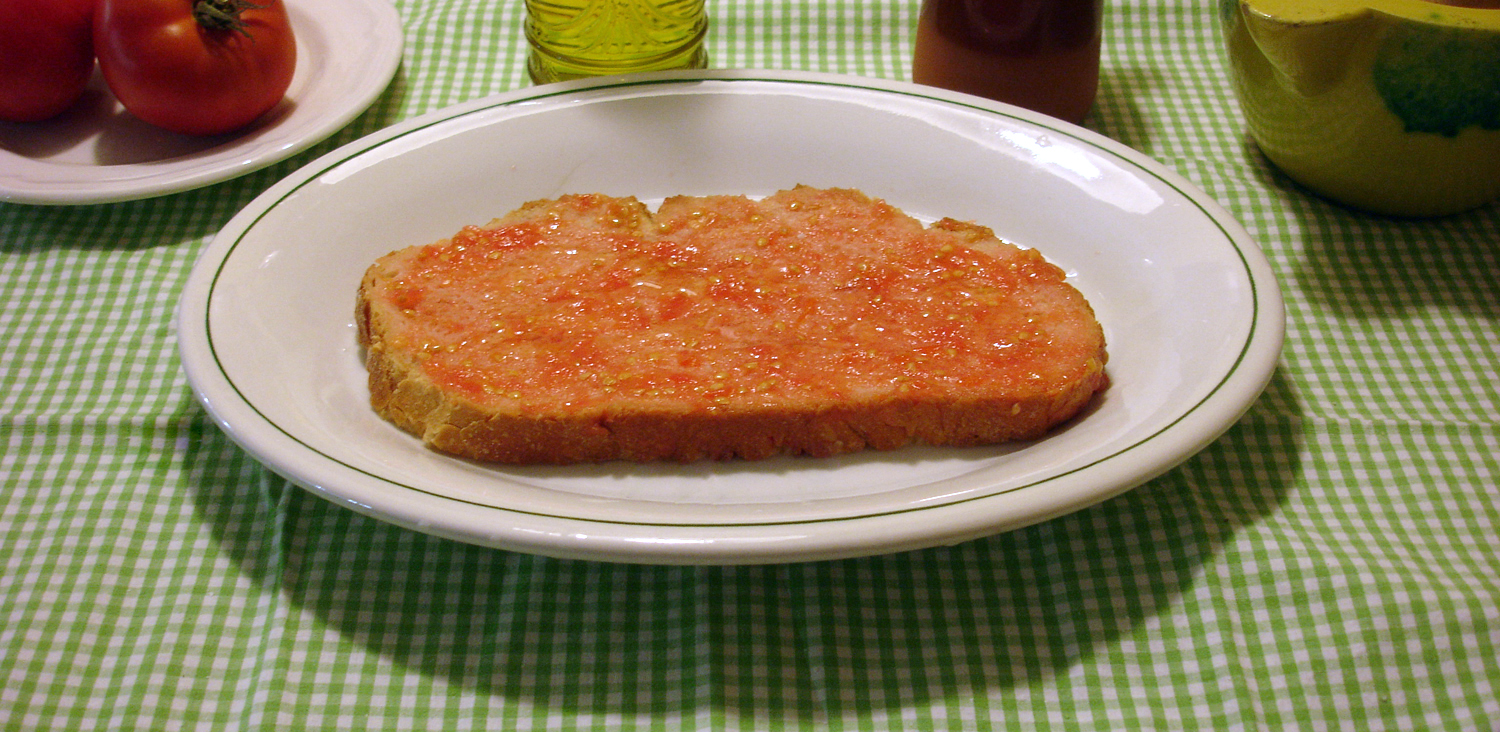|
Palmier
A palmier (, from French, short for ''feuille de palmier'' 'palm tree leaf'), pig's ear, palm heart, or elephant ear is a French pastry in a palm leaf shape or a butterfly shape, sometimes called ''palm leaves'', ''cœur de France'', ''French hearts'', ''shoe-soles'', or ''glasses'' that was invented in the beginning of the 20th century. Preparation Palmiers are made from puff pastry, a laminated dough similar to the dough used for croissant, but without yeast. The puff pastry is rolled out, coated with sugar, and then the two sides are rolled up together so that they meet in the middle, making a roll that is then cut into about slices and baked. Usually it is rolled in sugar before baking. Varieties Known as palmeras in Spain, in the Puerto Rican version, they are topped with honey. In Mexico and other Latin American countries they are known as ''orejas'' (ears). In China, they are known as butterfly pastries. In Greece they are usually known as little glasses (''γυαλ ... [...More Info...] [...Related Items...] OR: [Wikipedia] [Google] [Baidu] |
List Of Pastries
This is a list of pastries, which are small buns made using a stiff dough enriched with fat. Some dishes, such as pies, are made of a pastry casing that covers or completely contains a filling of various sweet or savory ingredients. There are five basic types of pastry (a food that combines flour and fat); these are shortcrust pastry, filo pastry, choux pastry, flaky pastry and puff pastry. Two main types of pastry are nonlaminated, when fat is cut or rubbed into the flour, and laminated, when fat is repeatedly folded into the dough using a technique called lamination. An example of a nonlaminated pastry would be a pie or tart crust and brioche. An example of a laminated pastry would be a croissant, danish, or puff pastry. Many pastries are prepared using shortening, a fat food product that is solid at room temperature, the composition of which lends to creating crumbly, shortcrust-style pastries and pastry crusts. Pastries were first created by the ancient Egyptians. The clas ... [...More Info...] [...Related Items...] OR: [Wikipedia] [Google] [Baidu] |
Pastry
Pastry is baked food made with a dough of flour, water and shortening (solid fats, including butter or lard) that may be savoury or sweetened. Sweetened pastries are often described as '' bakers' confectionery''. The word "pastries" suggests many kinds of baked products made from ingredients such as flour, sugar, milk, butter, shortening, baking powder, and eggs. Small tarts and other sweet baked products are called pastries as a synecdoche. Common pastry dishes include pies, tarts, quiches, croissants, and pasties. The French word pâtisserie is also used in English (with or without the accent) for the same foods. Originally, the French word referred to anything, such as a meat pie, made in dough (''paste'', later ''pâte'') and not typically a luxurious or sweet product. This meaning still persisted in the nineteenth century, though by then the term more often referred to the sweet and often ornate confections implied today. Pastry can also refer to the pastry dough, from w ... [...More Info...] [...Related Items...] OR: [Wikipedia] [Google] [Baidu] |
Pig's Ear (pastry)00
Pig's ear may refer to: *Pig's ear (food) * Pig's ear (pastry) *Pigs Ear, Pennsylvania Pigs Ear is an unincorporated community in Elk County, Pennsylvania Pennsylvania (; ( Pennsylvania Dutch: )), officially the Commonwealth of Pennsylvania, is a state spanning the Mid-Atlantic, Northeastern, Appalachian, and Great ... *'' Cotyledon orbiculata'', a flowering succulent plant *'' Gomphus clavatus'', an edible species of fungus *'' Discina perlata'', a species of fungus {{Disambig ... [...More Info...] [...Related Items...] OR: [Wikipedia] [Google] [Baidu] |
Pastry
Pastry is baked food made with a dough of flour, water and shortening (solid fats, including butter or lard) that may be savoury or sweetened. Sweetened pastries are often described as '' bakers' confectionery''. The word "pastries" suggests many kinds of baked products made from ingredients such as flour, sugar, milk, butter, shortening, baking powder, and eggs. Small tarts and other sweet baked products are called pastries as a synecdoche. Common pastry dishes include pies, tarts, quiches, croissants, and pasties. The French word pâtisserie is also used in English (with or without the accent) for the same foods. Originally, the French word referred to anything, such as a meat pie, made in dough (''paste'', later ''pâte'') and not typically a luxurious or sweet product. This meaning still persisted in the nineteenth century, though by then the term more often referred to the sweet and often ornate confections implied today. Pastry can also refer to the pastry dough, from w ... [...More Info...] [...Related Items...] OR: [Wikipedia] [Google] [Baidu] |
Puff Pastry
Puff pastry, also known as ', is a flaky light pastry made from a laminated dough composed of dough (') and butter or other solid fat ('). The butter is put inside the dough (or vice versa), making a ' that is repeatedly folded and rolled out before baking. The gaps that form between the layers left by the fat melting are pushed (leavened) by the water turning into steam during the baking process. History Modern puff pastry, used nowadays in European cuisine was created in France. The oldest recipe of puff pastry in France was written in a charter by bishop Robert of Amiens in 1311. However, the first recipe of the technique of ''tourage'' (the action of putting a piece of butter inside the dough and folding several time the dough) was published in 1651 by François Pierre La Varenne in ''.'' But it is considered that the invention of this technique was an idea of the famous painter Claude Gellée when he was an apprentice baker in 1612. The story goes that Lorrain was making a ... [...More Info...] [...Related Items...] OR: [Wikipedia] [Google] [Baidu] |
Otap (food)
''Otap'' (sometimes spelled ''utap'') is an oval-shaped puff pastry cookie from the Philippines, especially common in Cebu where it originated. It usually consists of a combination of flour, shortening, coconut, and sugar. It is similar to the French palmier cookies, but compared to the French cookies, are not so much heart-shaped and more tightly layered and thinner, making it crispier. In order to achieve the texture of the pastry, it must undergo an eleven-stage baking process. See also * Hojaldres * Apas (biscuit) * Palmier A palmier (, from French, short for ''feuille de palmier'' 'palm tree leaf'), pig's ear, palm heart, or elephant ear is a French pastry in a palm leaf shape or a butterfly shape, sometimes called ''palm leaves'', ''cœur de France'', ''French h ... References External linksShort description of utap Culture of Cebu Puff pastry Foods containing coconut Philippine pastries {{dessert-stub ... [...More Info...] [...Related Items...] OR: [Wikipedia] [Google] [Baidu] |
Puff Pastry
Puff pastry, also known as ', is a flaky light pastry made from a laminated dough composed of dough (') and butter or other solid fat ('). The butter is put inside the dough (or vice versa), making a ' that is repeatedly folded and rolled out before baking. The gaps that form between the layers left by the fat melting are pushed (leavened) by the water turning into steam during the baking process. History Modern puff pastry, used nowadays in European cuisine was created in France. The oldest recipe of puff pastry in France was written in a charter by bishop Robert of Amiens in 1311. However, the first recipe of the technique of ''tourage'' (the action of putting a piece of butter inside the dough and folding several time the dough) was published in 1651 by François Pierre La Varenne in ''.'' But it is considered that the invention of this technique was an idea of the famous painter Claude Gellée when he was an apprentice baker in 1612. The story goes that Lorrain was making a ... [...More Info...] [...Related Items...] OR: [Wikipedia] [Google] [Baidu] |
Spain
, image_flag = Bandera de España.svg , image_coat = Escudo de España (mazonado).svg , national_motto = ''Plus ultra'' (Latin)(English: "Further Beyond") , national_anthem = (English: "Royal March") , image_map = , map_caption = , image_map2 = , capital = Madrid , coordinates = , largest_city = Madrid , languages_type = Official language , languages = Spanish language, Spanish , ethnic_groups = , ethnic_groups_year = , ethnic_groups_ref = , religion = , religion_ref = , religion_year = 2020 , demonym = , government_type = Unitary state, Unitary Parliamentary system, parliamentary constitutional monarchy , leader_title1 = Monarchy of Spain, Monarch , leader_name1 = Felipe VI , leader_title2 = Prime Minister of Spain ... [...More Info...] [...Related Items...] OR: [Wikipedia] [Google] [Baidu] |
Portuguese Desserts
Portuguese may refer to: * anything of, from, or related to the country and nation of Portugal ** Portuguese cuisine, traditional foods ** Portuguese language, a Romance language *** Portuguese dialects, variants of the Portuguese language ** Portuguese man o' war, a dangerous marine cnidarian that resembles an 18th-century armed sailing ship ** Portuguese people, an ethnic group See also * * ''Sonnets from the Portuguese'' * "A Portuguesa", the national anthem of Portugal * Lusofonia * Lusitania Lusitania (; ) was an ancient Iberian Roman province located where modern Portugal (south of the Douro river) and a portion of western Spain (the present Extremadura and the province of Salamanca) lie. It was named after the Lusitani or Lusita ... * {{disambiguation Language and nationality disambiguation pages ... [...More Info...] [...Related Items...] OR: [Wikipedia] [Google] [Baidu] |
Catalan Cuisine
Catalan cuisine is the cuisine from Catalonia. It may also refer to the shared cuisine of Northern Catalonia and Andorra, the second of which has a similar cuisine to that of the neighbouring Alt Urgell and Cerdanya ''comarques'' and which is often referred to as "Catalan mountain cuisine". It is considered a part of western Mediterranean cuisine. History There are several Catalan language cookbooks from the Middle Ages that are known to modern scholars. The ' (1520) was one of the most influential cookbooks of Renaissance Spain. It includes several sauce recipes made with ingredients such as ginger, mace powder ('), cinnamon, saffron, cloves ('), wine and honey. '' Salsa de pagó'' took its name from the peacock ( ca, el paó) that it was intended to be served with, but could accompany any type of poultry, and was part of the medieval Christmas meal. ' (or ' as it's called in the '' Cuoco Napoletano'') was half-roasted (') poultry that was finished in a ''salsa'' thicken ... [...More Info...] [...Related Items...] OR: [Wikipedia] [Google] [Baidu] |
Argentine Cuisine
Argentine cuisine is described as a cultural blending of Mediterranean influences brought by the Spanish during the colonial period and, later, by Italian and Spanish immigrants to Argentina during 19th and 20th centuries, with influences from a further cultural blending of ''criollos'' (due to Spanish colonizers) with the Indigenous peoples of Argentina (such as ''mate'' and ''humitas''). Argentine annual consumption of beef has averaged 100 kg (220 lbs) per capita, approaching 180 kg (396 lbs) per capita during the 19th century; consumption averaged 67.7 kg (149 lbs) in 2007. Beyond '' asado'' (the Argentine barbecue), no other dish more genuinely matches the national identity. Nevertheless, the country's vast area, and its cultural diversity, have led to a local cuisine of various dishes. The great immigratory waves consequently imprinted a large influence in the Argentine cuisine, after all Argentina was the second country in the world wi ... [...More Info...] [...Related Items...] OR: [Wikipedia] [Google] [Baidu] |
French Pastries
French (french: français(e), link=no) may refer to: * Something of, from, or related to France ** French language, which originated in France, and its various dialects and accents ** French people, a nation and ethnic group identified with France ** French cuisine, cooking traditions and practices Fortnite French places Arts and media * The French (band), a British rock band * "French" (episode), a live-action episode of ''The Super Mario Bros. Super Show!'' * ''Française'' (film), 2008 * French Stewart (born 1964), American actor Other uses * French (surname), a surname (including a list of people with the name) * French (tunic), a particular type of military jacket or tunic used in the Russian Empire and Soviet Union * French's, an American brand of mustard condiment * French catheter scale, a unit of measurement of diameter * French Defence, a chess opening * French kiss, a type of kiss involving the tongue See also * France (other) * Franch, a surname * French ... [...More Info...] [...Related Items...] OR: [Wikipedia] [Google] [Baidu] |
00.jpg)





